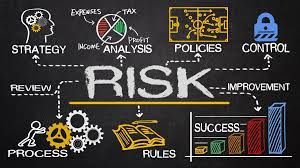Mastering Risk Management: Secure Your Business Future
Mastering Risk Management: A Key to Business Success
Today, we're discussing a crucial aspect of business success—risk management. Mastering risk management is essential for businesses to thrive and protect their assets. In an ever-changing business landscape, understanding and implementing effective risk management strategies can be the difference between success and failure.
Understanding Risk Management
Risk management involves identifying, assessing, and mitigating risks that could impact your business. It's about being proactive, rather than reactive, to potential threats. By implementing a risk management strategy, businesses can gain financial control, foster a culture of safety, and stay ahead of compliance and regulatory risks. This proactive approach allows businesses to anticipate potential issues and address them before they escalate into significant problems. For more insights, check out What Is Risk Management & Why Is It Important?.

Why This Is Important for Businesses
- Financial Stability: Effective risk management can prevent financial losses, which is critical for businesses operating on tight budgets. By proactively managing risks, businesses can avoid unexpected expenses and maintain financial health. This stability allows businesses to allocate resources more efficiently and invest in growth opportunities.
- Regulatory Compliance: Helps ensure compliance with industry regulations, avoiding costly fines and legal issues. Staying ahead of regulatory requirements is crucial for maintaining a good standing in your industry. Compliance not only protects your business from legal repercussions but also enhances your reputation with clients and partners.
- Business Continuity: Minimizes disruptions, ensuring your business can continue operating smoothly even when challenges arise. A well-prepared business can quickly adapt to changes and recover from setbacks. This resilience is vital in maintaining customer trust and satisfaction, even in the face of adversity.
Key Components of a Risk Management Plan
A comprehensive risk management plan is vital for any business. Here are the key components:
- Risk Identification: List potential risks that could impact your business, including financial, operational, strategic, and compliance risks. This step involves a thorough examination of your business environment to uncover vulnerabilities. Consider both internal and external factors that could pose threats to your operations.
- Risk Assessment: Evaluate the likelihood and potential impact of each risk, prioritizing them based on severity and probability. This helps in focusing resources on the most critical threats. Conducting a detailed risk assessment allows you to understand the potential consequences of each risk and develop targeted strategies to address them.
- Risk Mitigation Strategies: Outline actions to reduce or eliminate risks, such as insurance coverage and safety protocols. Implementing these strategies can significantly lower the chances of adverse events. Consider a range of mitigation measures, from technological solutions to employee training programs, to address different types of risks. For more strategies, explore 10 Types of Risk Management Strategies to Follow.
- Roles and Responsibilities: Define who is responsible for managing each risk and implementing strategies. Clear accountability ensures that risk management efforts are coordinated and effective. Assigning specific roles helps in streamlining the process and ensures that everyone knows their responsibilities in maintaining a safe and secure business environment.
- Monitoring and Review: Establish a process for regularly monitoring risks and reviewing strategies. Continuous evaluation helps in adapting to new risks and improving existing measures. Regular reviews ensure that your risk management plan remains relevant and effective in the face of evolving threats.
- Communication Plan: Detail how risk management information will be communicated within your organization. Effective communication fosters a culture of awareness and preparedness. Keeping all stakeholders informed about risk management efforts helps in building a cohesive and informed team ready to tackle challenges.
What Businesses Can Do to Enhance Risk Management
- Invest in Insurance: Protect your assets with the right insurance coverage tailored to your business needs. Insurance acts as a safety net, providing financial support when unexpected events occur. Work with a knowledgeable insurance provider to ensure you have comprehensive coverage that addresses your specific risks.
- Develop a Risk Management Plan: Create a comprehensive plan that outlines how to identify and respond to risks. A well-structured plan is the foundation of effective risk management. Regularly update your plan to reflect changes in your business environment and emerging threats.
- Engage Employees: Educate and involve your employees in risk management efforts to foster a culture of awareness and preparedness. Employees play a crucial role in identifying and mitigating risks. Encourage open communication and provide training to empower your team to contribute to risk management initiatives.
For more benefits of risk management, check out Top 7 Benefits of Risk Management.
Conclusion: Protecting Your Business
Mastering risk management is not just about avoiding pitfalls; it's about positioning your business for long-term success. By proactively addressing risks, you can safeguard your business's future and create a stable foundation for growth. If you're interested in learning more about risk management strategies or need assistance with insurance coverage, reach out to us at Thrive Insurance Group. We're here to support you in navigating these challenges and ensuring your business is protected. Thrive Today, Protect Tomorrow!!!










